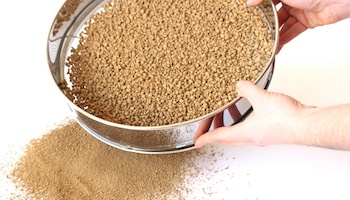777thSunRay
Mame
I would like to know more about the method described in this link from another thread: This guy (that's the link haha)
I'm sure many on the forum are familiar with this concept. It's basically the idea that with the right (essentially) fully inorganic mix, you can use an aggressive watering and fertilizing schedule, I presume to boost growth.
What I'd like to know is, are vermiculite and/or perlite suitable for this kind of mix? Of course they are inorganic, but I'm thinking perhaps the small particle size, and the fact they can break down, will not render the same kind of advantage as pumice, lava rocks, etc.
Also, what about using a solid time release fertilizer like Microlife with this setup? I would think one would have to use some lava rocks to hold the fertilizer, as pumice is not porous like lava rocks. It's also advised in the link that sphagnum moss and, I'm thinking, wood chips, are organics which are okay to use; same concept, wicking away excess moisture quickly, while retaining enough moisture and holding liquid and solid fertilizer..
I especially would like answers to my first question, to know what folks think about using the vermiculite or perlite with this method. And if so, in what kind of proportions? (I imagine relatively small). Thanks in advance!
I'm sure many on the forum are familiar with this concept. It's basically the idea that with the right (essentially) fully inorganic mix, you can use an aggressive watering and fertilizing schedule, I presume to boost growth.
What I'd like to know is, are vermiculite and/or perlite suitable for this kind of mix? Of course they are inorganic, but I'm thinking perhaps the small particle size, and the fact they can break down, will not render the same kind of advantage as pumice, lava rocks, etc.
Also, what about using a solid time release fertilizer like Microlife with this setup? I would think one would have to use some lava rocks to hold the fertilizer, as pumice is not porous like lava rocks. It's also advised in the link that sphagnum moss and, I'm thinking, wood chips, are organics which are okay to use; same concept, wicking away excess moisture quickly, while retaining enough moisture and holding liquid and solid fertilizer..
I especially would like answers to my first question, to know what folks think about using the vermiculite or perlite with this method. And if so, in what kind of proportions? (I imagine relatively small). Thanks in advance!
Last edited:


